The Players Championship is celebrating its 50th anniversary next week, which makes this a good time to take a look back at the history of the PGA Tour and to look beyond its flagship event. Obviously, this tournament is the jewel in the crown of the tour’s season, and the closest it’s come to getting a piece of the prestige that belongs to the four majors.
Yet what made the PGA Tour what it is? The story is long and complicated, but it hinges on some critical moments that charted its course and brought it to its current state. Let’s look back, starting in the very early days, at 18 moments that still aren’t quite appreciated for how much they mattered in the evolution of the biggest institution in professional golf.
1930: Bob Harlow conceives year-round circuit
There are a lot of important moments in American golf that could have come before this, from Harry Vardon’s tour in 1900 to Frances Ouimet’s 1913 U.S. Open win to purses rising to $10,000 in tour events. But when Bob Harlow became the manager of the “PGA Tournament Bureau,” he set the tone for more than 100 years of PGA Tour play. He was the one who first proposed an actual tour, and along with almost doubling prize money in his first year on the job, Harlow set the wheels in motion for all that would come next … including the volunteer structure that has become so critical to tour operations. Unless you’re a serious history nerd, you’ve probably never heard the name Bob Harlow, but he might be one of the most important men in tour history.
1961: PGA of America strikes ‘caucasians-only’ clause 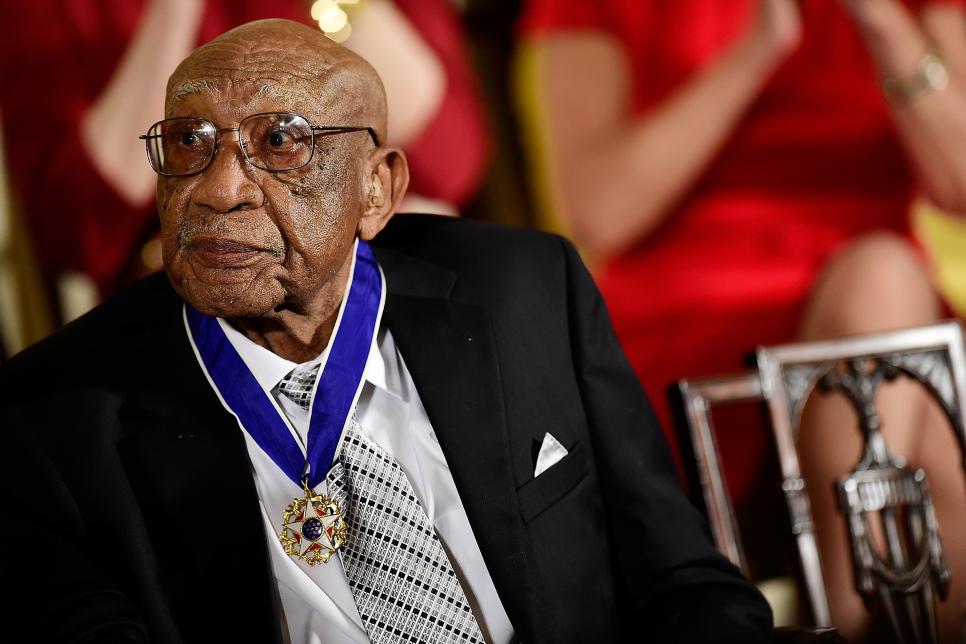
Patrick McDermott
Before researching Charlie Sifford’s story for last month’s Local Knowledge podcast, I was largely ignorant as to the integration battles that took place in professional golf—it’s certainly not as prominent as the stories in U.S. team sports, particularly baseball. But this was a process that took years, with lawsuits filed as early as 1948, and it was California Attorney General Stanley Mosk, in combination with players such as Sifford and Bill Spiller, who forced the PGA of America to move its events from the state. They complied for a short time, but the move by Mosk, and losing California from the circuit, heaped pressure on pressure, and finally the PGA of America caved. Sifford became the first full-time Black touring pro, and the struggles he endured set the tone for future black players who continued to break down the walls of discrimination.
1962: First color TV broadcast of golf
It’s hard to believe we’re only 60 years removed from the first color broadcast of a golf event, but it all started in 1962, when NBC, which had been televising U.S. Opens and other events in black and white, brought living color to the game with the 1962 Tournament of Champions in Las Vegas. Arnold Palmer won that event by a shot over Billy Casper, and it showed the world the possibilities of what golf could look like on the screen when the vibrant colors of tour courses could be shown in their natural state. This innovation paved the way for successive TV deals, and technological advances that have continued to the present.
More From Golf Digest  Players Championship The 50 greatest players of the last 50 years, ranked by their best season
Players Championship The 50 greatest players of the last 50 years, ranked by their best season 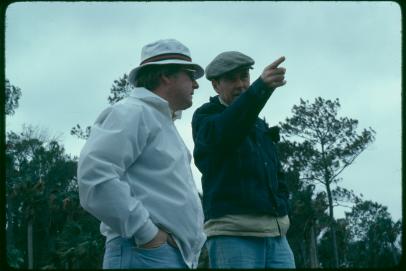 local knowledge Pete Dye, legendary designer of Sawgrass, was more complicated than you might think
local knowledge Pete Dye, legendary designer of Sawgrass, was more complicated than you might think 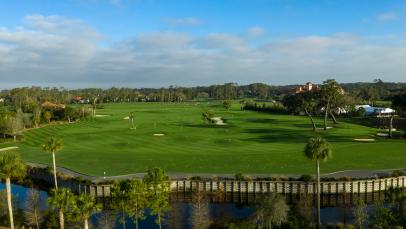 Players Championship The Ultimate Tour Pro Driving Range 1968: The Great Breakaway; players form their own tour
Players Championship The Ultimate Tour Pro Driving Range 1968: The Great Breakaway; players form their own tour
Whether the PGA of America failed to understand the value it had in its touring pros, or whether it knew and was just reluctant to change, the way it lost that side of the game remains one of the most head-scratching decisions in professional golf. Here again we find a complex story, but it fundamentally boils down to the PGA of America coming down on the side of club pros who made up the majority of its membership and refusing to pay a bigger percentage of tournament profits to the players who were drawing the interest of an increasingly engaged public. It was inevitable that the players would say “enough!” In 1968, they broke off in a summer revolt that ended with the formation of the Tournament Players Division. By 1969, they had their first commissioner in Joseph Dey, and the PGA Tour was in business.
1981: Ron Streck wins with metal woods 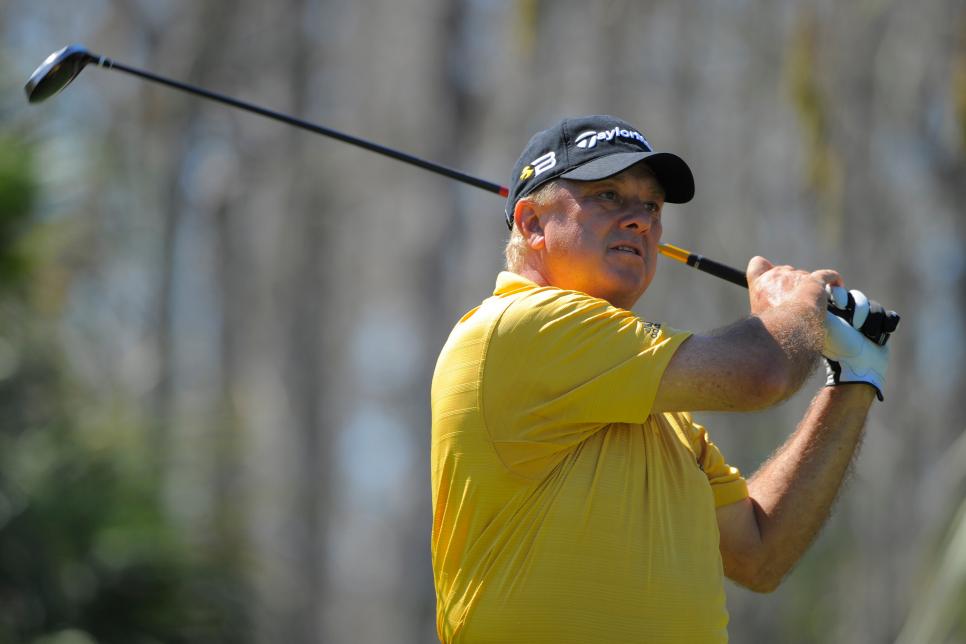
Ron Streck, the first player to with metal woods, is pictured teeing off during the 2008 ACE Group Classic.
Scott A. Miller
At the Michelob-Houston Open, Streck, a largely unheralded tour pro, became the first player to win using TaylorMade’s metal woods that had been introduced two years earlier. The circumstances here were strange, in that Streck held a third-round lead and the final round was washed out by rain, making him the winner after 54 holes. Streck would never win again, but he established a precedent for the style of clubs that would take over the game before long.
1982: TPC Sawgrass opens, ushering in stadium golf
This may be the 50th anniversary of the Players Championship, but the most significant staging of the tournament was not the first in 1974, but the first after Sawgrass opened. The Pete Dye course (check out our Pete Dye podcast here) drove the players crazy, but the lasting significance here was the tour’s foray into stadium golf, which would become a trademark of the organization as it grew to unforeseen size … and also a topic of some controversy for its biggest players.
1983: Deane Beman squashes the Nicklaus rebellion 
Deane Beman and Jack Nicklaus.
PGA TOUR Archive
As alluded in the preceding item, the tour’s growing power, and its expansion into merchandise, course construction and other areas was seen as a threat by players such as Jack Nicklaus who wanted a significant slice of that pie for themselves and felt that the tour was ballooning into something all-encompassing. Nicklaus made a power play that involved Arnold Palmer and Tom Watson, and was a direct challenge to Deane Beman, the tour’s commissioner. Beman thoroughly out-maneuvered Nicklaus, though, with the help of certain players on his side, and the lesson Nicklaus learned was that the genie was out of the bottle. This victory for Beman removed the last check to the PGA Tour’s massive growth.
1983: “All-exempt” tour instituted, and the rabbit era ends
Here, Beman instituted a new system that made the top 125 players each year on the tour exempt, ending the practice of so-called “rabbits”—up-and-coming players or those on the downside of their career, usually—making up large portions of every field through Monday qualifying. Though the format has been tweaked, the foundation established in ’83 remains in use today, with golfers earning exemptions through accomplishments throughout the year.
1986: Official World Golf Ranking launched
This was not a PGA Tour initiative, but the Official World Golf Ranking would come to play a massive role in tour history, right up to the present moment as a hot button issue in the ongoing war between the tour and LIV Golf. Today, the tour is one of seven members of the OWGR company, and along with forming a key basis for exemptions into majors, it is now a leverage point that has hampered its competitors, meaning that the World Ranking only grows in influence and controversy with time.
1990: Ben Hogan Tour (now Korn Ferry) is founded
It would be many years before PGA Tour Q School left the building for good, but in 1990 the tour instituted what seemed like a logical extension of its exemption system—a true minor leagues, from which players could hone their games and earn their way onto the big circuit. Eventually, this would evolve to replace Q School entirely, and it has cycled through several sponsors (Nike, Buy.com among them). But its use as a developmental tour for the PGA Tour both extended its reach and created a reliable system for producing future stars—a system that perhaps safeguards it today against leagues like LIV without a true talent pipeline in the wings.
1994: Greg Norman’s world tour bid is defeated
As the origin story for Norman’s current crusade against the tour, you can harken back 30 years, when he gathered the top tour players to pitch an eight-event, 40-man world tour under the auspices of Fox TV. Unlike other rebellions before and after, this one was nipped in the bud relatively quickly when Arnold Palmer spoke out against it, saying that he and Jack Nicklaus had declined a similar opportunity in ’68 because it wouldn’t be good for the game. Norman went from confident to deflated instantly, and this story resonates both as an important (if easy) victory for the tour, and the inspiration for a far more difficult revolt that would come decades later with Norman again as one of the key figures.
1994: Advent of the Presidents Cup
We know, we know … you still don’t think the Presidents Cup is that big. But as world golf continues to grow, and great players emerge outside of the U.S. and Europe, the institution of the Presidents Cup becomes more and more valuable. It’s 30 years old now, and remember that it took the Ryder Cup almost 50 years to become competitive and resonate with the American public. The Presidents Cup has become more competitive in recent years, despite the U.S. having a commanding 12-1-1 overall lead in the series, and it feels inevitable that the International team will begin to have more success. When that happens, the tour’s resilience through the lean years, and starting the competition in the first place, could look very prescient.
1996: Emergence of Tiger Woods 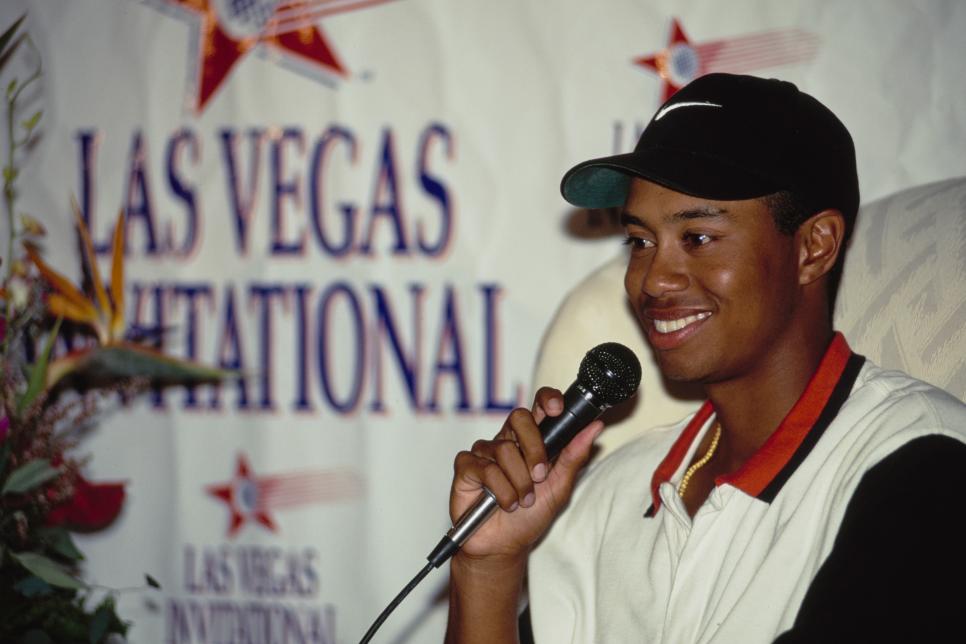
Tiger Woods speaks after his first PGA Tour win in the 1996 Las Vegas Invitational.
J.D. Cuban
Let’s say it together: “How is this possibly under-appreciated?” The answer is that there has been no single engine for the tour’s continued growth and profitability, not to mention the money hauled in from TV deals, greater than Tiger Woods. It is impossible to overstate his importance to this sport, right up to the present day, when he’s been a crucial bulwark for the tour as it tries to fend off LIV. Even far past his prime, he remains the biggest draw, and everything good that has accrued to the tour and its players in the last three decades owes itself in some way to Tiger.
2007: FedExCup Playoffs begin
Starting in ’07, professional golf had a playoff system for the first time, and though it took some adjusting before the tour reached a format it was (more or less) content with, it established a year-end championship that fans could follow over a series of events. Now, it goes without saying that it’s not going to compete in prestige with the majors or the Players. Still, like the Presidents Cup, this is about the establishing something that can grow in importance over the years, and comparing the relative influence now to its origin, you can see an upward trajectory, albeit a slow one.
2018: End of two lawsuits—caddies and Vijay Singh
When caddies demanded something—anything to mitigate rising healthcare costs—it was a dim day for the PGA Tour when its leaders refused to budge. That changed, by all accounts, when Jay Monahan took over as commissioner, and though the caddies dropped their lawsuit, he showed a willingness to talk that ended with the loopers getting a stipend for healthcare expenses. Almost simultaneously, the defamation suit Vijay Singh filed against the tour was settled out of court, under confidential terms, ending a tense five-year standoff that began when the tour investigated him for a positive test for deer antler spray before dropping the matter … only to get sued by Singh for the public ridicule. Both were bad looks for the tour, and the conclusion felt like a clearing of the air—one that would be needed for the fight to come.
2020: COVID-19 pandemic 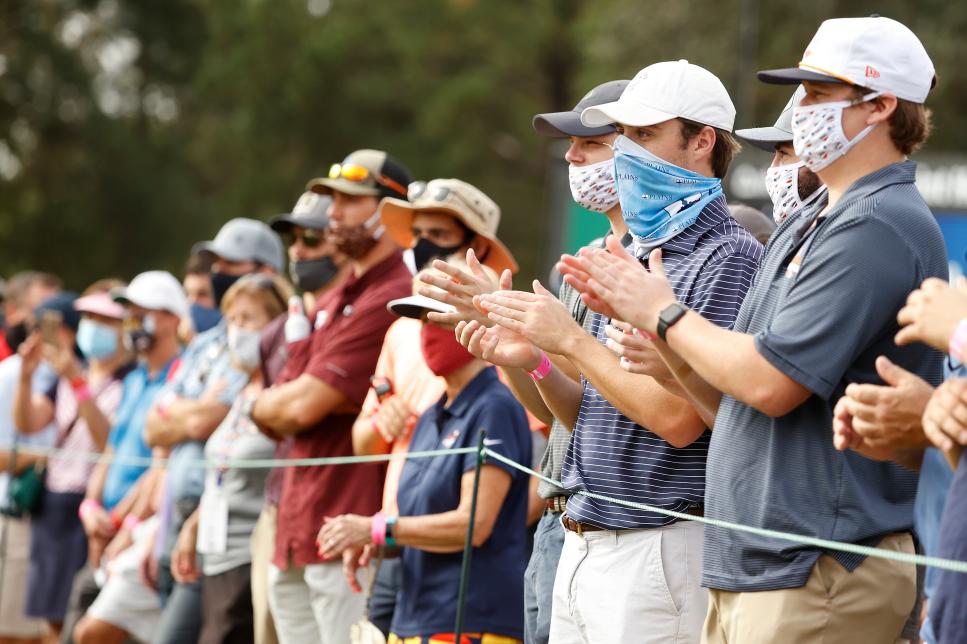
Fans wearing masks watch the Houston Open in November 2020.
Maddie Meyer
Like all other sports, golf was halted in its tracks by the pandemic in March 2020, and only resumed slowly—and without fans—after being shut down for most of the spring and early summer. The curveball from the universe had the effect of forcing Monahan, still a new commissioner, to think and adjust on the fly. But something else happened that seemed to help the tour, at least briefly—it halted the momentum of the PGL in its tracks. The PGL had begun to reach a stage where it could reasonably think about signing players, but once the world shut down, Andy Gardiner’s new league seemed to hit the skids. That gave the tour some breathing room, although the concept of the league would come back in a more threatening form before long.
2021: Tour forms “strategic alliance” with DP World Tour
Reading a history of late 2021 reveals that Europe’s DP World Tour was on the cusp of aligning itself with the PIF in a move that could have been disastrous for the PGA Tour. Monahan’s task was to nip that in the bud by forming an alliance with his European counterparts that could head off that threat and infuse a struggling DP World Tour with money. Of course, the PIF has plenty of money, too, and it was the tour’s good fortune that DP World Tour chief executive Keith Pelley eventually sided with them. Like many of the moves the tour made in this LIV era, this was a stopgap measure; if not quite a rearguard action, survival was nip-and-tuck, and this was a coup for the tour at a difficult moment.
2023: Tour-PIF agreement
The most we can say about last June’s then-shocking framework agreement between the PGA Tour and PIF is that it’s incredibly important in the tour’s history, but we don’t know exactly why yet. Will it indeed usher in a time when Saudi investment secures the tour’s financial future, allowing it to thrive while also giving the PIF its sought-after influence in the sport? Or will it look more like a way to buy time for Monahan and Co. before going in a different direction that ultimately excluded the Saudis? Wherever history places this on that broad spectrum, it will be a key pivot moment for the tour in an ongoing battle it had previously seemed destined to lose in the moneyed trenches.
This article was originally published on golfdigest.com




